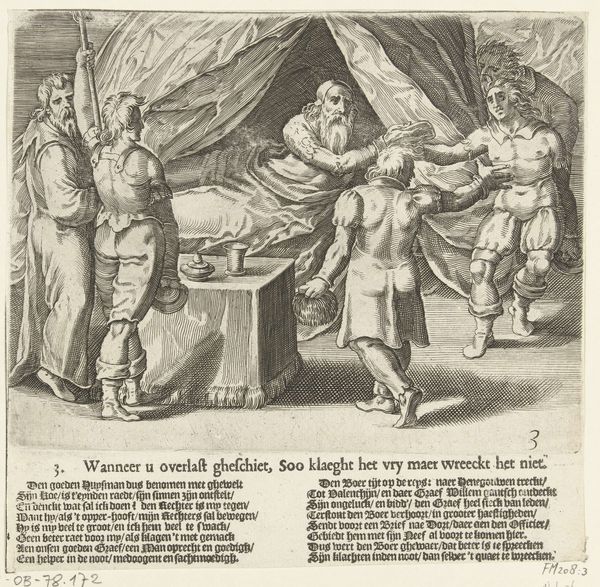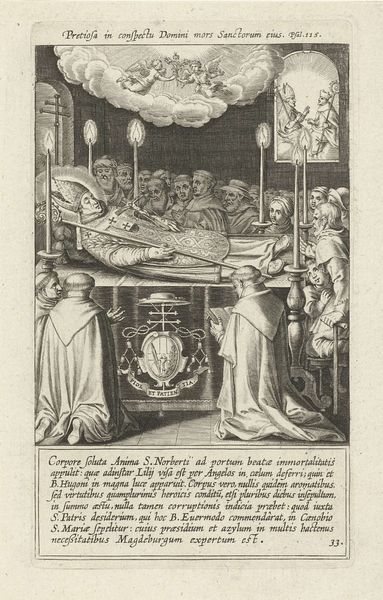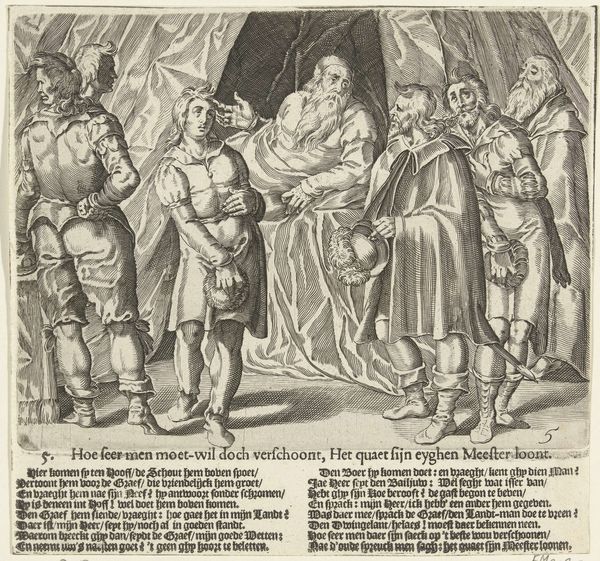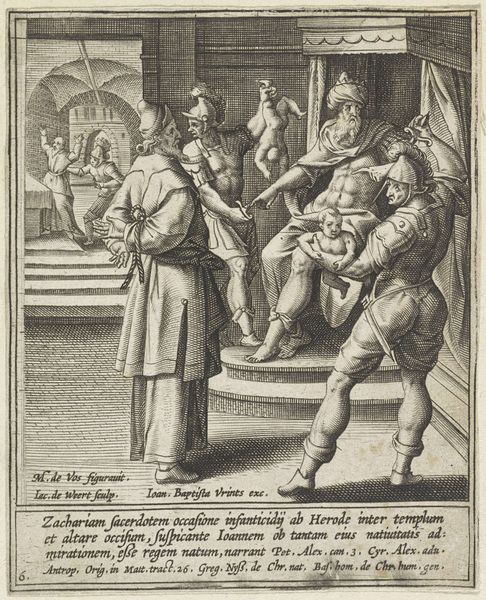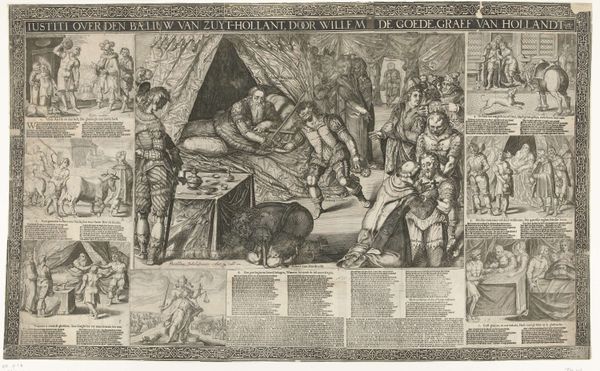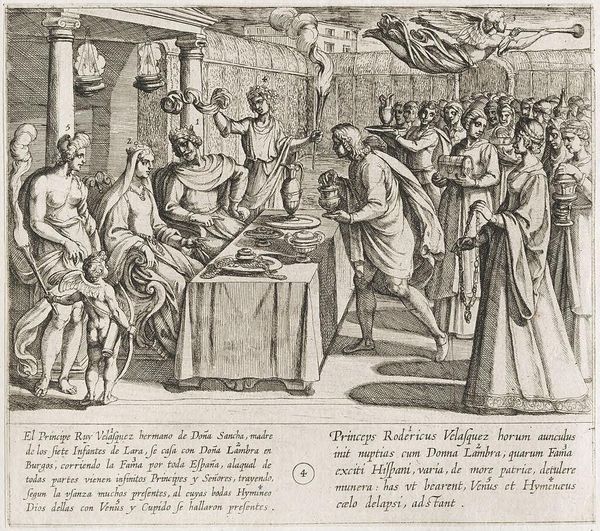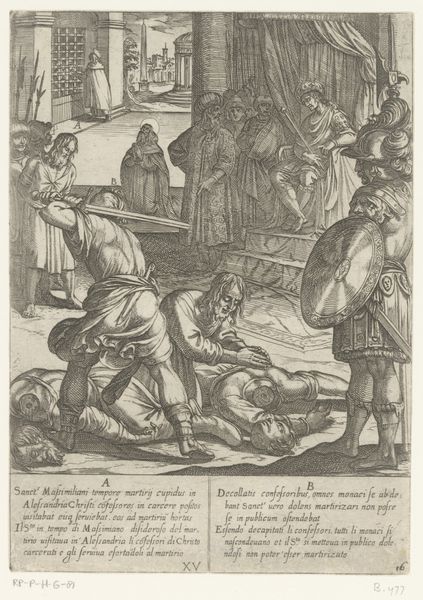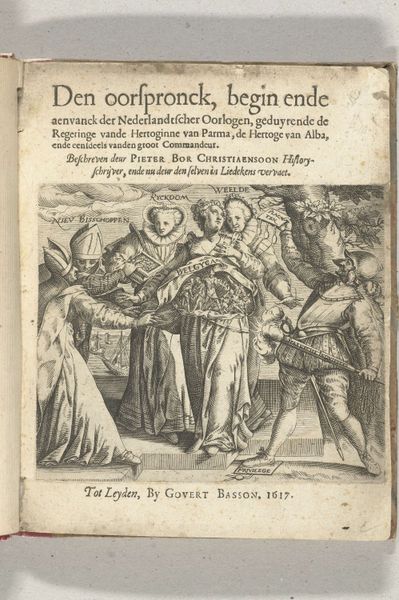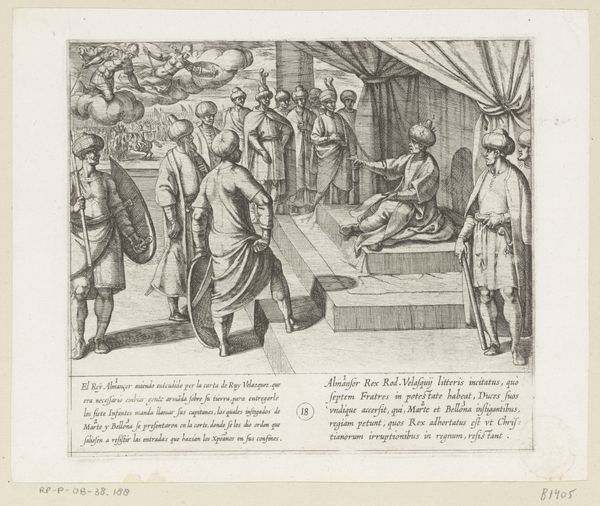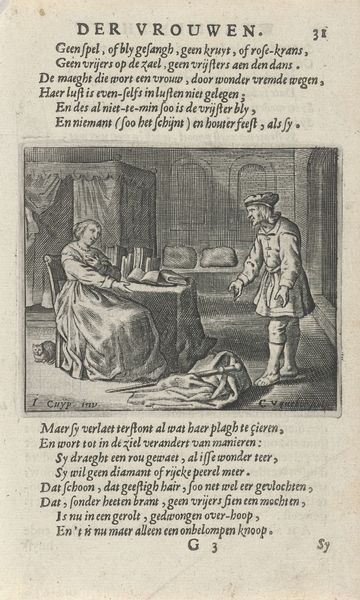
De schout betaalt de boer zijn vergoeding, de weduwe van de baljuw treurt bij zijn doodskist 1613
0:00
0:00
bartholomeuswillemszdolendo
Rijksmuseum
print, etching, engraving
#
narrative-art
#
baroque
#
dutch-golden-age
# print
#
etching
#
old engraving style
#
traditional media
#
figuration
#
line
#
genre-painting
#
history-painting
#
engraving
#
realism
Dimensions: height 182 mm, width 190 mm
Copyright: Rijks Museum: Open Domain
Editor: This etching, "De schout betaalt de boer zijn vergoeding, de weduwe van de baljuw treurt bij zijn doodskist," by Bartholomeus Willemsz. Dolendo, created in 1613, presents quite the somber narrative. The clear division of space, with the payment on one side and mourning on the other, strikes me as particularly stark. What do you see in this piece, considering its historical context? Curator: It's intriguing, isn't it? This print, made during the Dutch Golden Age, reveals a lot about the socio-political landscape. We see justice, but through a lens of class and power. Notice how the sheriff's payment to the farmer seems almost transactional, while the widow's grief feels intensely personal. This points to a system where wealth and status dictate experiences of justice and loss. Do you think this artwork serves to legitimize or critique the established power structure? Editor: I see what you mean. It's easy to read the sheriff's payment as justice being served, but the widow’s grief suggests the human cost of that “justice.” Perhaps it’s not so straightforward; it presents a system of power but acknowledges its impact on individuals. So it's both a reflection and a critique, potentially prompting viewers to question the morality of the period's social order? Curator: Precisely. Dolendo's composition, dividing the scene so dramatically, amplifies this tension. He compels us to confront these contradictory narratives. Consider the act of printing itself - it makes accessible these sorts of reflections on moral governance for public discourse and challenges ideas of elitism. What does this image say about our current times, and what actions can art inspire? Editor: That’s fascinating. Considering today's socio-political landscape, this work seems to echo the enduring inequalities of wealth and justice. Art as a catalyst for challenging prevailing power dynamics, both then and now. Thank you. I definitely have a clearer picture. Curator: My pleasure. I encourage you to keep viewing historical art as more than a beautiful depiction of past eras and to examine these artistic compositions within current cultural structures.
Comments
No comments
Be the first to comment and join the conversation on the ultimate creative platform.
